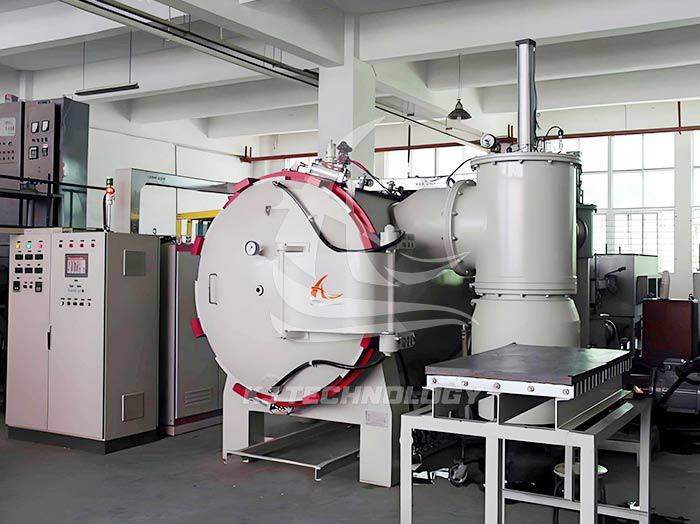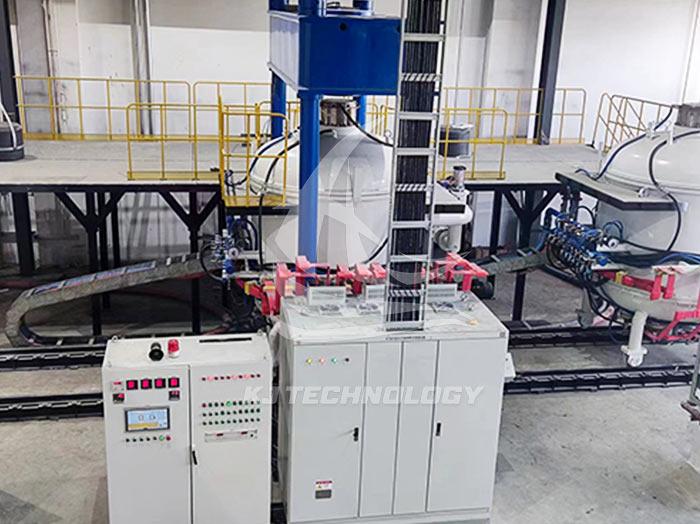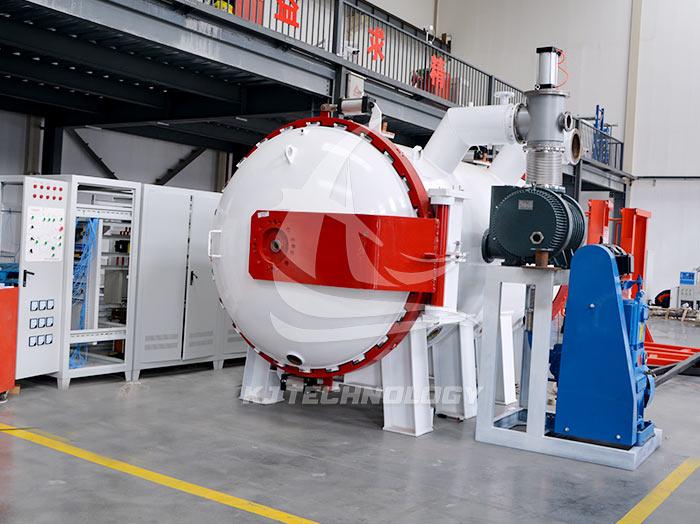What are the applications of high vacuum and high temperature muffle furnaces in?
 09-16-2025 Author: KJ technology
09-16-2025 Author: KJ technology
The high vacuum and high temperature muffle furnace, with its dual advantages of high vacuum environment and high temperature processing capability, has demonstrated unique value in multiple fields such as scientific research, industry, quality inspection, and education. The following are its core application areas and specific scenario analysis:
1. Research field: Exploring the ultimate performance of materials
Material synthesis and modification
Preparation of nanomaterials: Under vacuum conditions, the size and morphology of nanoparticles are controlled by high-temperature calcination of precursors (such as metal salt solutions). For example, when preparing nano titanium dioxide, vacuum conditions can avoid particle aggregation and obtain materials with high photocatalytic activity.
Research on High Temperature Superconducting Materials: Heat treatment of materials at specific temperatures and atmospheres to induce the formation of superconducting phases. For example, the synthesis of yttrium barium copper oxygen (YBCO) superconductors requires high-temperature sintering in a vacuum or inert atmosphere to achieve high critical current density.
Development of functional ceramics: Study the phase transition and crystallization behavior of ceramic materials. For example, the sintering of alumina ceramics needs to be carried out in a vacuum environment above 1600 ℃ to eliminate pores, improve density and mechanical strength.
Material performance testing
Thermal stability analysis: Simulating the performance changes of materials in extreme environments such as space and geological processes. For example, studying the thermal expansion coefficient of ceramic materials at high temperatures provides a basis for the design of spacecraft thermal protection systems.
Antioxidant performance evaluation: Test the lifespan of metal materials in high-temperature oxidation environments through vacuum inflation cycle experiments. For example, evaluating the thermal corrosion resistance of turbine blade alloys.
2. Industrial production: improving product quality and efficiency
Metallurgical Industry
Metal melting and purification: Melting active metals such as titanium and zirconium under vacuum to avoid reacting with oxygen and nitrogen to generate impurity phases. For example, vacuum arc melting can prepare high-purity titanium alloys for use in the aerospace industry.
Heat treatment process optimization: quenching and tempering treatment of steel to improve its microstructure. For example, vacuum quenching can eliminate the oxide scale on the surface of steel, improve fatigue strength and corrosion resistance.
Ceramic and Glass Industry
Ceramic sintering: By vacuum sintering, the porosity is reduced, and the transparency and mechanical properties of ceramic products are improved. For example, the preparation of transparent alumina ceramics requires a vacuum environment at 1800 ℃ to achieve high transmittance.
Glass melting and annealing: melting optical glass under vacuum to avoid bubble and stripe defects; Annealing treatment eliminates internal stress and improves glass strength. For example, the annealing process of mobile phone screen glass requires precise control of the cooling rate to prevent cracking.
Electronic component manufacturing
Ceramic capacitor sintering: Sintering the ceramic dielectric layer at a specific temperature and atmosphere to ensure the electrical performance and reliability of the capacitor. For example, the sintering of multilayer ceramic capacitors (MLCC) needs to be carried out under nitrogen protection to prevent oxidation of the silver electrode.
Magnetic material production: Pre sintering and sintering ferrite magnetic materials to form the required crystal structure. For example, the sintering of soft magnetic ferrite needs to be carried out in a vacuum environment at 1200 ℃ to achieve high magnetic permeability and low loss.
3. Quality Inspection and Environmental Protection: Ensuring Safety and Sustainability
Chemical Analysis and Quality Inspection
Ash content determination: In industries such as coal, food, and chemical, ash content is determined by high-temperature burning of samples. For example, ash content is an important indicator for evaluating coal quality in coal analysis, and vacuum muffle furnace can avoid sample oxidation and improve measurement accuracy.
Pre processing of elemental analysis: ashing and melting the sample, destroying organic matter, and transforming the tested element into a suitable form for analysis. For example, when measuring the heavy metal content in soil, it is necessary to first ash the soil sample in a muffle furnace to remove organic interference.
Environmental protection field
Hazardous waste disposal: high-temperature incineration of medical waste and chemical waste to render them harmless. For example, vacuum high-temperature incineration can reduce the generation of toxic substances such as dioxins and lower exhaust emissions.
Sludge pyrolysis: converting the sludge generated from sewage treatment into combustible gases, bio oil, and carbon black, achieving resource utilization. For example, bio oil produced by sludge pyrolysis can be used as a fuel to replace fossil fuels.
4. Education field: cultivating practical and innovative abilities
Experimental teaching in universities
Materials Science Experiment: Students use a muffle furnace to prepare ceramic materials with different compositions and structures, and study the relationship between their properties and processes. For example, by adjusting the sintering temperature and time, observe the density changes of alumina ceramics.
Chemical synthesis experiment: Conduct chemical reactions under controlled atmosphere to explore reaction mechanisms. For example, when synthesizing metal organic framework materials (MOFs), high-temperature reactions are required in a vacuum or inert atmosphere to obtain high-purity products.
Vocational college skills training
Industrial heat treatment simulation: Students become familiar with metal quenching, tempering and other process flows by operating a muffle furnace, and master key skills in temperature control and time management.
Environmental Protection Technology Practice: Simulate environmental protection processes such as sludge pyrolysis and waste incineration to cultivate students' environmental awareness and practical abilities.








